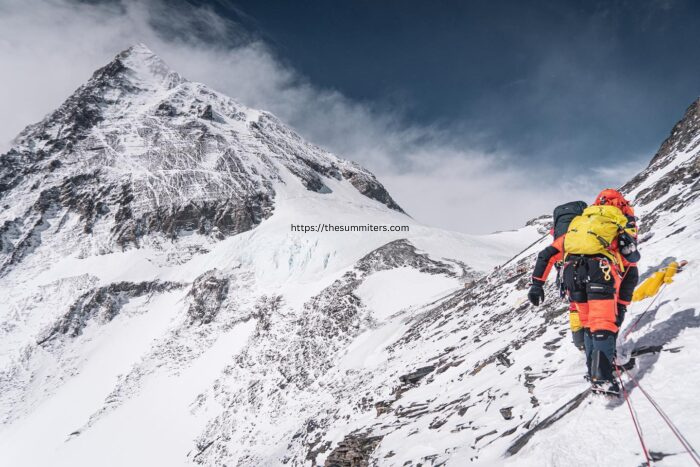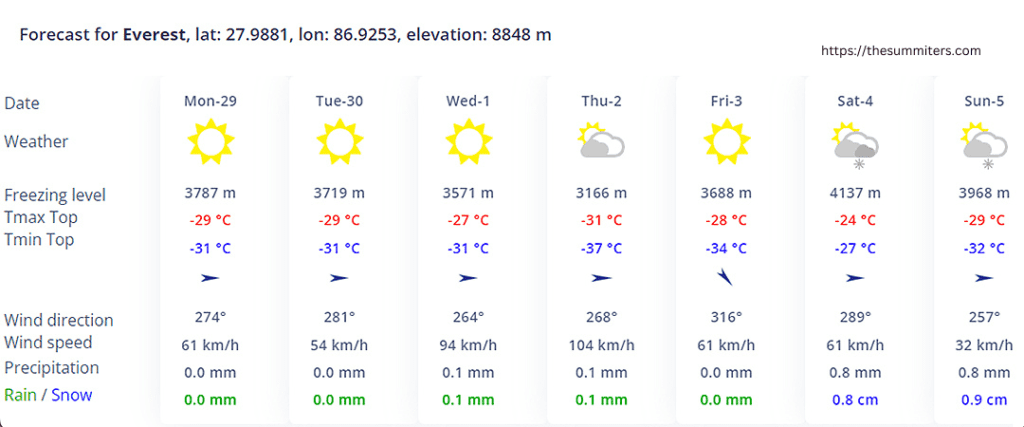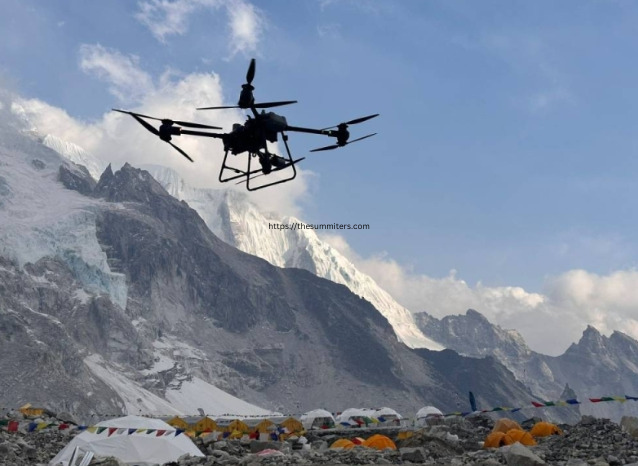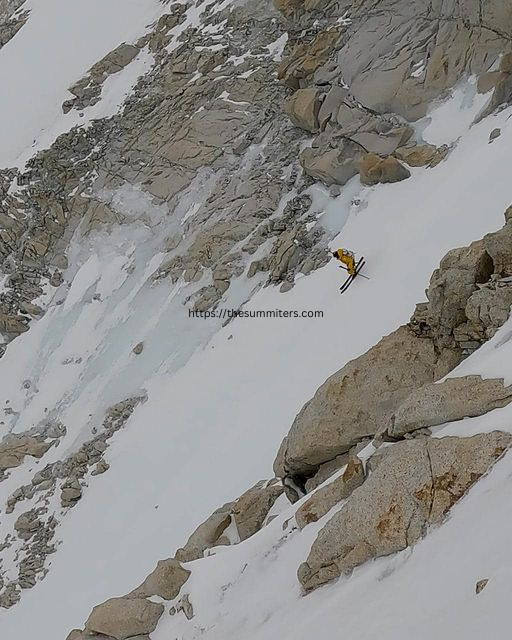A couple of months back, it seemed like the authorities might tone down the hustle and bustle of Everest season. However the situation has taken a different move. There’s now a greater presence of helicopters buzzing over Everest Base Camp, the Khumbu Icefall, and even the Valley of Silence, which isn’t living up to its name anymore.
In an unprecedented move described as a “one-time” decision, helicopters have been given the green light this season to ferry gear and supplies up to Camp 2 at 6,400 meters. They’ve also airlifted ropes to assist in fixing the route. A team of seasoned sherpas has wasted no time and is already hard at work, having reached the South Col at 7,900 meters.

Next Summit Attempt
The rope-fixing operation is moving swiftly, thanks to the aerial resupplies and a large team of experienced fixers. Yesterday, eleven sherpas from Seven Summit Treks successfully reached Camp 4. Their next objective: to make a push for the summit.
However, the exact timing remains uncertain. Currently, the summit is being battered by strong winds from the jet stream, which are not expected to subside until at least Sunday. Lakpa Sherpa, CEO of 8K Expeditions, has earmarked May 5th as their potential summit day.

Following the sherpas‘ ascent, it may still take several days for the clients to reach the top. Guides must ensure that Camp 4 is adequately stocked with essential gear, particularly oxygen bottles.
Some climbers, like Piotr Krzyzowski, who is tackling Lhotse, are making rapid progress. After resting at Camp 2, he plans to continue to Camp 3 tomorrow.
Norrdine Nouar, who is attempting Everest without supplemental oxygen, is also on the move. He is heading to Camp 2 today and will proceed to Camps 3 and 4 for acclimatization trips. Only then will he return to Base Camp for a final rest before embarking on his no-oxygen summit bid around May 20th.
Thanks to the assistance of helicopters, commercial teams are establishing and supplying camps more efficiently than ever before.”
Goodbye to Silence
Up until now, helicopters were strictly limited above Base Camp, primarily for rescue missions or transporting essential gear and staff to establish the summit route. But this season, due to delays in opening the Khumbu Icefall route and the more perilous path, authorities have had a change of heart. They’re now permitting helicopters to ferry all sorts of equipment up to Camp 2.
This shift in policy follows pressure from influential outfitters determined to prepare the route for a late May summit attempt before the monsoon season hits. Mingma Sherpa, CEO of Seven Summit Treks, stressed in the Everest Chronicle that without increased helicopter support, a successful summit attempt this season would be nearly impossible.
Lakpa Sherpa of 8K Expeditions verified that helicopters have been given approval to transport oxygen and other essential equipment to Camp 2..
While this move aims to enhance safety for local workers by sparing them long, hazardous journeys through the Icefall with heavy loads, it’s not without its drawbacks. It contradicts previous efforts by Khumbu authorities to minimize the mountain’s environmental impact. Nonetheless, it establishes a significant precedent: acknowledging the constant danger of the Khumbu Icefall, with potential safety justifications for similar actions in the future.
Moreover, the presence of helicopters might tempt some to exploit them for profit by ferrying clients directly to Camp 2, bypassing the Icefall. Last year, 23 Everest climbers admitted to using helicopters to return from Camp 2 to Base Camp, avoiding the challenging descent.”
Could Drones Be the Solution?
There’s been some buzz lately about using cargo drones as a more eco-friendly option, and it seems local authorities are taking note. According to The Himalayan Times, this spring, a DJI FlyCart 30 drone is set to be deployed to ferry garbage from Camp 1 down to Base Camp. Under typical conditions, this drone, weighing in at 65 kg, can carry loads of up to 95 kg and cover distances of 28 km. However, the big question remains: how will it fare at altitudes ranging from 5,350m to well over 6,000m on Everest? The drone operates on two electric batteries, and the pilot controls it from Base Camp.

Summit Attempts on Other 8,000-Meter Peaks
There’s a chance that climbers will reach the summit of Dhaulagiri this week if the winds die down.
Nivesh Karki, representing Pioneer Adventure, shared with ExplorersWeb that ropes have been fixed up to 7,300 meters, and the original plan was to reach the summit by May 3rd. However, it seems the winds might still be too strong then. Nonetheless, they aim to make the summit push before May 5th.

Meanwhile, on Makalu, most climbers have already made their way up to Camp 2 or even Camp 3. Bartek Ziemski, a Polish climber planning to ski down from the summit, assessed the conditions by skiing back from 7,300 meters to Camp 1.”